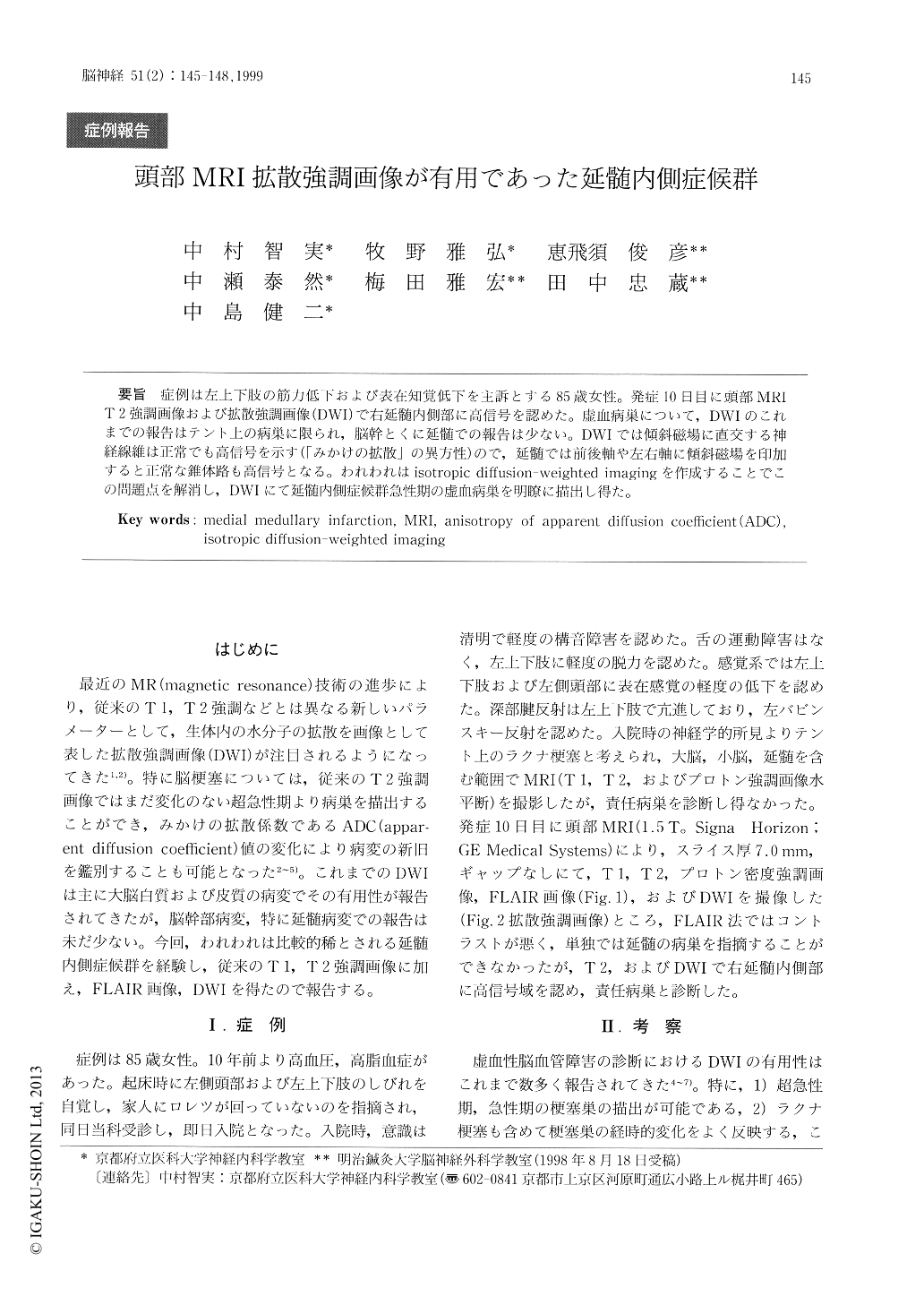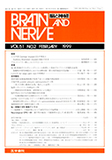Japanese
English
- 有料閲覧
- Abstract 文献概要
- 1ページ目 Look Inside
症例は左上下肢の筋力低下および表在知覚低下を主訴とする85歳女性。発症10日目に頭部MRIT2強調画像および拡散強調画像(DWI)で右延髄内側部に高信号を認めた。虚血病巣について,DWIのこれまでの報告はテント上の病巣に限られ,脳幹とくに延髄での報告は少ない。DWIでは傾斜磁場に直交する神経線維は正常でも高信号を示す(「みかけの拡散」の異方性)ので,延髄では前後軸や左右軸に傾斜磁場を印加すると正常な錐体路も高信号となる。われわれはisotropic diffusion-weighted imagingを作成することでこの問題点を解消し,DWIにて延髄内側症候群急性期の虚血病巣を明瞭に描出し得た。
We report an 84-year-old woman with medial medullary syndrome diagnosed by diffusion-weight-ed magnetic resonance imaging (MRI). She was admitted because of left hemiparesis and hypes-thesia. T2-weighted and diffusion-weighted MRI showed a high signal lesion at the right medial medulla oblongata 10 days after the onset. It is well known that diffusion-weighted MRI is useful for detecting supratentrial cerebral ischelnic lesiolls in the extremely acute stage. However, to our know-ledge, there have been only a few reports of diffusion-weighted MIRI in patients with ischemic stroke of the medulla oblongata.

Copyright © 1999, Igaku-Shoin Ltd. All rights reserved.


